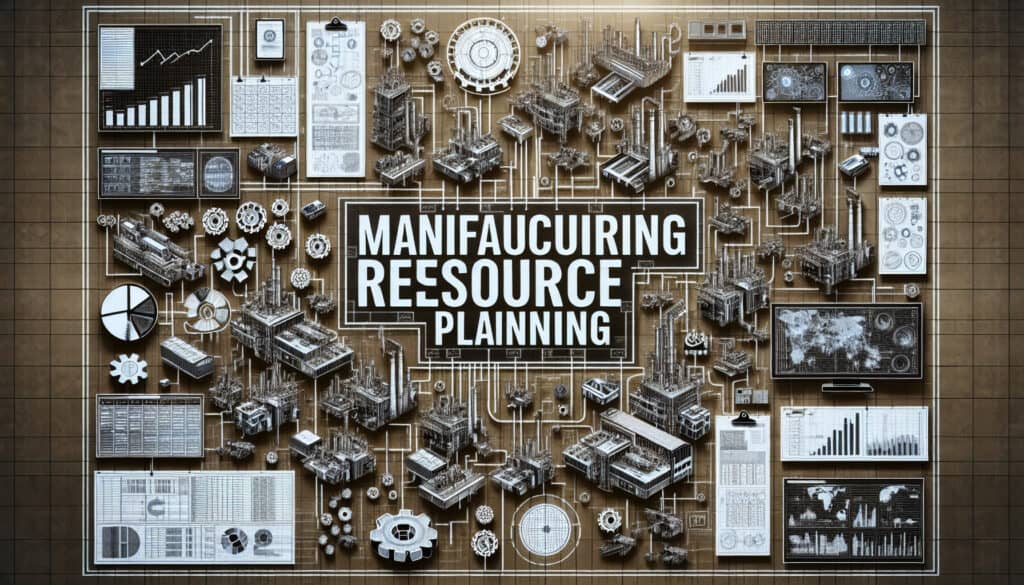To plan and manage all the resources of a التصنيع company.
- المنهجيات: الهندسة, الجودة
تخطيط موارد التصنيع (MRP II)

تخطيط موارد التصنيع (MRP II)
- التحسين المستمر, تخطيط موارد المؤسسات (ERP), التصنيع اللين, تصنيع, تحسين العمليات, كفاءة الإنتاج, إدارة الجودة, المنتجات الموفرة للموارد, سلسلة التوريد
الهدف:
كيفية استخدامه:
- An integrated system that manages all aspects of a manufacturing business, from production and inventory to finance and الموارد البشرية. It is an extension of Material Requirements Planning (MRP) that includes financial and other business functions.
الايجابيات
- Provides a single, integrated view of the business; Can improve decision-making and efficiency.
سلبيات
- Can be complex and expensive to implement; Requires a high degree of data accuracy.
الفئات:
- الاقتصاد, تصنيع, إدارة المشاريع
الأفضل لـ
- Planning and managing all the resources of a manufacturing company in an integrated way.
Manufacturing Resource Planning (MRP II) serves as a robust methodology that can be particularly effective in industries such as automotive, aerospace, electronics, and consumer goods, where integration of various functions is paramount. Organizations implementing MRP II often initiate the process during the planning phase of a new product development cycle, allowing teams to forecast demand accurately, manage inventory levels, and synchronize production schedules with labor and materials. Participants typically include production planners, financial analysts, inventory managers, and human resource personnel, all of whom contribute their unique expertise to ensure that the system reflects the realities of the manufacturing environment while aligning with strategic business objectives. For instance, a company might utilize MRP II to coordinate its supply chain and production processes in real-time, facilitating better responsiveness to customer orders and reducing lead times. Utilizing this integrated system can lead to enhanced visibility across departments, fostering interdepartmental collaboration that drives operational efficiency and effectiveness. Companies adopting MRP II also benefit from standardizing processes, which can result in cost savings and improved resource utilization. Its application is often supplemented with modules for forecasting, scheduling, and financial management, ensuring that businesses are not only producing goods but also optimizing their operational strategy and financial performance. In rapidly changing markets, the adaptability of MRP II can prove advantageous, allowing organizations to pivot based on market demands and operational capabilities without significant disruption.
الخطوات الرئيسية لهذه المنهجية
- Define business goals and objectives across all departments.
- Integrate key business processes such as production planning, inventory management, and financials.
- Implement a unified database to ensure consistency and accuracy of data across functions.
- Establish a detailed production schedule based on MRP outputs and capacity planning.
- Align workforce planning with production requirements and inventory levels.
- Monitor and adjust parameters regularly to reflect changes in demand or resource availability.
- Utilize performance metrics to evaluate resource utilization and operational efficiency.
- Incorporate feedback loops from all departments to enhance collaborative decision-making.
- Continuously evaluate the integration and effectiveness of the system, making iterative improvements.
نصائح للمحترفين
- Implement advanced analytics to enhance demand forecasting accuracy, reducing excess inventory and stockouts.
- Integrate real-time performance metrics within the MRP II system for proactive adjustments and resource allocation.
- Regularly review and refine the master production schedule based on changing market conditions and internal capabilities.
لقراءة عدة منهجيات ومقارنتها, نوصي باستخدام
> مستودع المنهجيات الشامل <
مع أكثر من 400 منهجية أخرى.
نرحب بتعليقاتكم على هذه المنهجية أو المعلومات الإضافية على قسم التعليقات أدناه ↓، وكذلك أي أفكار أو روابط متعلقة بالهندسة.
Historical Context
1949
1950
1950
1960
1960
1960
1960
1940
1950
1950
1958
1960
1960
1960
1960
(if date is unknown or not relevant, e.g. "fluid mechanics", a rounded estimation of its notable emergence is provided)















منشورات ذات صلة
استبيانات الانزعاج العضلي الهيكلي
الاختبار متعدد المتغيرات (MVT)
تحليل الانحدار المتعدد
أنظمة التقاط الحركة
طريقة MoSCoW
اختبار متوسط المزاج